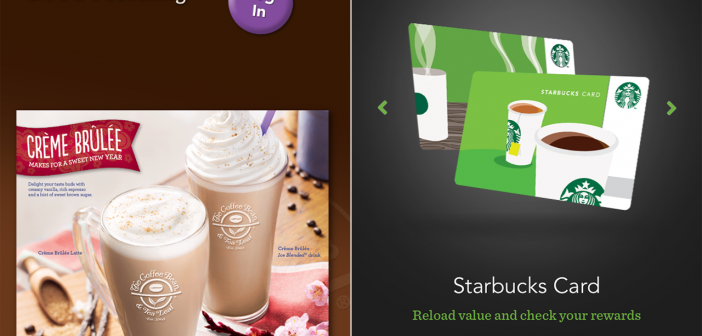Building iOS and Android mobile apps seems to be all the rage now. Start-ups, small-medium-enterprises (SMEs), multinational corporations (MNCs) — they are all building apps.
Mobile apps are software that reside on a person’s mobile phone. There is almost no other more intimate way to reach out to your consumers and users. Just imagine this – Singapore has a mobile phone penetration rate of 148.9% way back in 2012. Businesses know they are missing out huge opportunities by not developing their own mobile apps.
Mobile apps can serve a large variety of purposes. Some can be perfect avenues for businesses to push out information and interact with their customers. Other apps allow users to conduct transactions. Many also build mobile apps for marketing and outreach purposes. One such example is the highly popular McDonald’s Surprise Alarm which went completely viral in 2014.
Not all mobile apps are created equal. Some mobile apps are extremely well-executed and highly welcomed by customers. Others are poorly designed, and achieve nothing but invite the wrath of audiences.
Take for example, the two most popular competing brands in Singapore – Starbucks and The Coffee Bean & Tea Leaf. Both of them came up with their own iOS apps for the Singapore market, but each enjoyed a totally different outcome.

The Coffee Bean & Tea Leaf mobile app (left) vs Starbucks mobile app. The Starbucks app shows a great placement of login button.

The Coffee Bean & Tea Leaf mobile app (left) vs Starbucks mobile app. The stars of the screen should be the coffee, not ugly boxes and gradients.

The Coffee Bean & Tea Leaf mobile app vs Starbucks mobile app. The placement of location photos in the former does not seem to serve any purpose.
Beyond the obvious design inadequacy, The Coffee Bean & Tea Leaf’s old mobile app was slow, laggy and filled with bugs. Users did not like it. Eventually, The Coffee Bean & Tea Leaf pulled its app from the iOS App Store (it is no longer available for download now). Money down the drain?
Starbuck’s app, in contrast, works really well. The well-received app drove huge amount of conversions, and increased customer engagement and sales. It also went on to win not one, not two, but three Mob-Ex Awards, a prime awards program that celebrates outstanding work in the mobile marketing business, in 2013.
Now, both mobile apps share very similar functionalities. Why was the outcome so different?
This brings me to the topic today – cost.
Understanding The True Cost of Building Mobile Apps
We see the same pattern everywhere – in various industries and when buying products and services. Supermarkets sell bicycles at just S$99, but there are bicycles being sold at specialised shops for as much as S$1,999 and more. In this example, if you do not understand the true cost of building a bicycle, you will never understand or appreciate what the price difference entails.
Understanding the true cost of building mobile apps can make a difference between the success or failure of the next mobile app you want to build. You wouldn’t want to engage a vendor who promises the sky, and ultimately fails to deliver quality. Likewise, you wouldn’t want to be paying unnecessary premiums to vendors just because they are “branded”. There are many vendors out there who would gladly shave their prices to win your business, but is going with them really a good idea?
To help you understand the cost of building a mobile app, I present this simple equation:
(Duration of Project * Quality of Talents * Number of Talents) + Vendor Reputation = Cost
Let me explain:
Duration of Project
This is straightforward. Just like manufacturing, the longer the time needed to build your mobile app, the more expensive it will cost to build.
Do you want to have many features? How complicated are each of these features? On how many different platforms (Android, iOS, Windows Phone, Web, etc) do you want to launch your mobile app? These are the factors that affect the number of man-hours incurred when building your mobile app.
Quality of Talents
Mobile app development is a highly labour-dependent and labour-intensive activity. Just like any activity that involves creative and labour input from individuals or teams, the quality of the end-product is highly dependent on the quality of hands which works on it. I believe the talents behind the Starbucks mobile app are probably way more experienced than those behind the Coffee Bean mobile app.
Having talented hands to work on your mobile apps costs sizable cash, so many vendors simply offshore most or all of their development work to developing countries or use an army of junior developers.
The cost difference between different software developers is huge. A junior developer based in India can cost US$300 a month, while a really senior and experienced developer based in the United States can command up to US$200 an hour.
Scrutinise the quotation from your vendors and don’t be too shy about querying on the experience level of their designers and developers. Ask where the bulk of the development work is done. If there’s any mismatch, run.
Number of Talents
A typical mobile app project involves a large number of professionals with different skill sets. At the most basic level, there will be a project/account manager who acts as a liaison point between you (the client) and the development team. There will be designers who work on the look, feel and usability of your app. There will be also developers who specialise in different part of the deliverables – backend API developers, database architects, iOS developers, Android developers, etc. The list goes on.
In every mobile app project, there are many mouths to feed. If the quotation from the vendor is too low, be wary and ask about the size of their development team and the number of people that will be placed on your project.
Vendor Reputation
Reputable vendors generally cost more, but they don’t give a higher quotation for fun.
Such vendors reduce the risk of project failures by limiting the number of clients that each project manager, developer or designer are servicing at any given time. They invest in a better development environment and tools to reduce the time required to develop your project. They have a more elaborate and time-consuming testing process to ensure that you get the quality mobile app you deserve. All these require significant investments by the vendor.
Just like buying common electrical appliances, the same item with the same specifications from different brands may be priced differently. The more reputable brands usually command a higher price, but that is because they give you the assurance that their products are better built, more reliable, and last longer.
There are of course, vendors who command a premium just because they can. Think luxury bags. Beyond a certain price range, the difference in material and quality starts to fade and the logo is the only factor that determines the price. I call this the “ego” premium. You don’t want to pay this type of premium when building your mobile apps.
Finding the “Goldilocks” Vendor
As you can see, mobile app development is not voodoo. It is just like any other traditional business, where labour contributes greatly to the cost and outcome quality.
Always start with a budget that works for you. If you have only S$10,000 to build a mobile app, find a vendor with attributes I have mentioned above, and can develop your app within that budget. There are many vendors out there, but do know that a S$10,000 mobile app is going to be very different from a S$60,000 mobile app, even if the functionality is similar.
If you have more budget, decide what the best balance is and spend it on the right vendor. Your mobile app represents your brand. You certainly do not want what happened to the now-defunct Coffee Bean mobile app to happen to you.
If you call for a tender and a vendor comes in with a price drastically lower than anyone else’s, tread with caution and ask questions.
Being a Programmer and Account Manager at Originally US, I strive to be a “Goldilocks” vendor for clients.
Curious to find out how much it actually costs for us to build a mobile app for you? Here’s a tool to help!
Disclaimer: Originally US is not affiliated with the vendors responsible for the apps of The Coffee Bean & Tea Leaf, Starbucks, and McDonald’s.





